The star attraction at Seonyudo Station is the eponymous island, and to get to there I stepped out Exit 2, whereupon I was greeted by a rush of cicada song. It was hot, but the humidity had broken, there was a breeze, and Yangpyeong-ro-22-gil (양평로22길) was a pleasant street, with a number of inviting cafes and restaurants. In fact, the 600-meter stretch between the station and river formed part of the Yeongdeungpo Walking Trail (영등포의 걷고 싶은길), which then continues west to the Anyang Stream and down to Dorimcheon Station. Nearer the river a row of identical, peaked-roofed machine shops sprung up amid the more gentrified surroundings, reminders of Yeongdeungpo’s industrial heritage.
It’s most evident in Mullae, but the cheaper rents in Yeongdeungpo are every so often the source of some fun artistic ferment in the district, and just past the machine sheds I came to a small place called Egg Community and Shop. Being Sunday, it was closed but its window displays held funky installations of discarded badminton and tennis equipment and light fixtures made from recycled orange ping-pong balls and cardboard egg cartons. Egg’s focus seemed squared on repurposing old materials, most explicitly in one of the shop’s sub-units, meekgreen, an ‘upcycling design studio’ that a sign said served as a recycling institute, carpenter shop, and design studio. There was also the ‘re-spoon’ recycling gallery, restaurant, and barroom. A DIY furniture-making class was advertised as being held the first week of every month, 7-10 p.m. and 10 a.m.-1 p.m. on Wednesday and Saturday, respectively.
Just before reaching the end of the street I hung a left on Yangpyeong-ro-22-sa-gil (양평로22사길), following the signs to Seonyudo and to the pedestrian bridge over the riverside highway. The bridge was lined on its left and right sides with rectangular wooden signs, each bearing a cutout of combat boots, that commemorated distinguished soldiers. Among them was a trio of foreigners, including General Walton Walker, whom Walker Hill in eastern Seoul is named after.
This first bridge over the highway led to Seonyu Bridge (선유교), a pretty little arc that was built in the early 2000s in a collaboration between Seoul and the French 2000 Commission. The bridge links the riverside with Seonyu Island (선유도) / Seonyudo Park (선유도공원) and terminates in a wide observation platform at Seonyudo’s western end. From here you can take in the World Cup Fountain in the Han River. It’s the world’s second tallest, sending a plume of water 202 meters into the air, but that’s all it does – it shoots water straight up and mostly just manages to look like a gigantic cigarette. More pleasant to look at are the views of Parliament, the 63 Building, Gwanak Mountain (관악산), N Seoul Tower, and the World Cup Stadium you get from here.
The western tip of the island, just below the viewing platform, is inaccessible to visitors and is filled with willows, tall grasses, and various other trees and groundcover. The only blemish is a large mint and orange power line tower that bears electricity lines over the river. To the east, however, the island turns into one of the city’s most unique and intriguing parks.
Seonyudo has a history that parallels that of the larger city surrounding it. The natural islet originally had a 40-meter hill where scholars and poets would admire views of the river, unsullied by any World Cup Fountains. The views lasted until the early 1900s, when the hill was obliterated for use as a quarry, largely to make embankments on the fields for the now gone Yeouido airport. The industrialization of the island continued in the ‘70s when a water purification plant was constructed here. As Seoul modernized and prospered, its focus turned from development to creating a more livable city and Seonyudo was the target of an ambitious and imaginative plan to turn the old sewage treatment into a park but to do so while leaving vestiges of its industrial recent past in place, incorporating the steel and concrete into the scheme. The park opened in 2002 and in 2004 received a Design Award of Merit from the American Society of Landscape Artists.
Descending from the viewing platform the first sign of the old Seonyudo was three large concrete cylinders off to the right, perhaps once used for storage, now laced with vines creeping up their sides. Heading directly into the park, I came to an area of three circular depressions, each spanned by walkways. These used to be the plant’s concentrator and regulator; now one was a small amphitheater and another had been transformed into a small play area with huge rust-colored pipes refashioned into slides and play tubes. Next to the depressions was a dirt court where a father and son were playing catch, at least until the ball got away and they had to go looking for it in the tall grasses.
Part of the old regulator had also been transformed into the Environment Studio (환경교실), supplied with books and computers for kids to learn about the island and the environment. Bathrooms were next to the studio, and above the urinals in the men’s room hung black and white photos of the island after the treatment plant was decommissioned (1993) but before park construction began. Things looked, bluntly, awful. The photos showed the rather apocalyptic side of industry, and their positioning instigated a few moments of reflection on the awful state that the island was in and how well things here had been refashioned.
Speaking of refashionings, the old regulators were in the midst of being used as photo shoot backdrops for a few small groups of local cosplayers. We’ve come across Seoul’s relatively small cosplay scene before, at Yangjae, but except for that neighborhood and the periodic conventions at the SETEC convention center in Daechi-dong the sub-culture isn’t readily apparent so I was a bit surprised to stumble upon them here, but as soon as I did it seemed like it shouldn’t have been surprising at all, decommissioned industrial equipment serving as the ideal backdrop for sailor uniforms and metallic-colored wigs.
Another small group of cosplayers were taking turns digging through their suitcases of props and standing in the glare of their photographer’s professional lighting equipment a few meters further on in the Garden of Transition (시간의정원). Once a settling basin for chemicals, the garden exists on two levels. Below, brick paths run between trees and bamboo stalks; overhead, wooden catwalks were built into the concrete channels where water or chemicals once flowed. Some of these channels have been left as they were and water striders now skim over the surface.
I checked out the cosplayers from above for a bit and also watched another photo shoot – this a group who seemed to be taking shots for a fashion website, though they mostly sat around complaining about the heat. Before long I headed back down to check out the artificial waterfall trickling down a stone wall and to wander among the daisies, white irises, and basins of water filled with lily pads, lotus flowers, and tiny little fish that made up the rest of the garden.
Just east of the Garden of Transition is the Aquatic Botanical Garden (수생식물원). Formerly a filtration plant, its concrete tanks are now filled with water and lily pads. Large beds of cattails completed the garden.
The final garden is the Garden of Green Columns (녹색기둥의정원). The term ‘garden’ is a bit of a stretch here. The spot was once the clean water reservoir, and when the island underwent its transformation into a park, the reservoir’s concrete slab cover was removed and all but one of the supporting columns were swaddled in ivy. Of the three gardens this is plainly the least intriguing, as the evenly spaced posts in a stone covered courtyard don’t very well reward casual wandering, and if the garden were on its own it would suffer, but it manages to blend in as part of the larger complex.
Behind the Garden of Green Columns is the rear entrance to Story of Seonyudo (선유도 이야기), a sizeable display hall, and it was next to this that I chanced upon my last, and oddest cosplay shoot of the day, which involved one girl dressed up as a skateboarder, another as an anime pirate, and a third instructing them to do pirate-y and skateboarder-y things together for her camera.
The Story of Seonyudo, where the water conveyance pump formerly was, now houses a multimedia gallery, a lounge, a bookshop, and both a special exhibition gallery and a permanent exhibit of the history and culture of the Han River. Unfortunately for me I couldn’t see any of this, as the building was closed for refurbishment until sometime later this year. No specific date was given for its reopening, but a number for the park management office was posted in case anyone would like to inquire: 02) 2631-9368.
The building’s main entrance is on the east side, and outside the walls on either side had been covered in another ‘Before I die I want to…’ mural of the sort we saw near Hyehwa. I thought this was a really one of a kind idea when I saw the first one, but then Liz Instagrammed one she came across in the Czech Republic recently too, and then I found out that this is, like, a ‘thing‘. What started in New Orleans is now all over the world, and browsing some of the wants that people have filled in makes for entertaining reading: ‘…say I miss you,’ ‘…just be myself,’ ‘…make you my latest man,’ ‘…ROB A BANK.’
The final section of the park began with the Environmental Water Playground (환경물놀이터), where a thin channel of water ran between cobblestone banks, which were occasionally interrupted by boulders lodged into their slopes. There was also a small sandy ‘beach’ area. Half a dozen kids were playing in the water as their parents watched, and other groups were picnicking and/or napping on shaded platforms.
Immediately next to the playground was the Water Purification Basin (수질정화원). Once a settling basin for chemicals, its basins are now filled with water, reeds, and lily pads, and are crisscrossed by a set a walkways between them. In the quiet I could hear water trickling from basin to basin through the narrow channels for several seconds at a time; then the cicadas would unanimously decide it was time, and their buzzing call would again drown everything else out.
The very last structure I came to was the Glasshouse (온실), a pair of connected greenhouses. It’s got some plants, and that’s about all I can tell you as the amount of interest I have in botany is nowhere near enough to make me stay any longer than absolutely necessary in a building designed to be even hotter than Seoul in August already is.
It’s actually this end of the park that is what could be considered the ‘main entrance’ and it’s here that the visitors’ center is located the former water filtration plant. Inside is a scale model of the park, photos of the construction process, and some basic information on what things are and what they used to be.
Seonyudo’s main features run down its spine, but there are attractions around its edges too, reachable via the footpaths that circumscribe the island. To the north, near the Water Playground, is Seonyu Pavilion (선유정), filled with ajummas laying on their backs and fanning themselves when I passed by, and, near the start of the Garden of Transition, Cafeteria NARU (카페테리아 ‘나루’), once site of the plant’s sluice gates and pumps, now site of overpriced snacks. Really, though, what you’re paying for is the view. With expansive views of the Han and the north bank from both its indoor seating and outdoor patio, you might consider the extra few thousand won worth it. As for the south side, there’s an 11-ton rainwater discharge valve on display, looking for all the world like something that fell off the Nautilus.
Stop short of the island and you find yourself at a particularly nice stretch of the Han River Park (한강공원), one that’s especially popular with bikers. There were the weekend warriors in their serious racing outfits, ajeosshis cruising to the trot coming out of their handlebar-mounted speakers, and at least ten members of the Zenith Crew Fixed Gear Ride Team, all gathered at the tables outside the 7-11 and all dressed in matching black crew t-shirts.
East of the bridge to Seonyudo was a flower garden, sorely in want of water, and then a large open grass field, perfect for a picnic, a catch, or even an impromptu football game. Elsewhere several families and groups of friends were relaxing in tents they’d pitched for the day as hundreds of dragonflies flitted in the air above them.
The Korean army was holding a weekend event in the park when I happened to visit and had set up several exhibitions that added to the goings-on in the area. As an alternative to the Seonyu Bridge, a pontoon bridge had been set up to link the park with the island, and citizens (mostly families with young kids) could stroll across the channel over its interlocking sections, getting an up-close view of the eight small patrol boats moored to it on display. West of the bridge was an exhibit of personal artifacts that had been unearthed in the process of searching for M.I.A.s and a tent where visitors could sample army food. I was curious to see what might be in Korean MRE ration and strolled over to check it out, but it turned out that they were only serving up corn flakes and banana lattes. Apparently the ROK military eats the same thing as dieting teenage girls.
For the physically active, this part of the park offers plenty of options. In addition to the usual volleyball, basketball, and soccer courts and pitches, there’s also a sand-filled ssireum ring – two concentric circles in a sand pit – for those keen to strip down to their loincloths and try their hand at the Korean wrestling style, and a 그네 (geunae), the traditional swing that hangs from a crossbeam connecting two wooden A-frames some twenty feet high. Further west, near the end of the park, is the spasmodically named C& 한강랜드 floating barge where you can rent banana boats, motor boats, water skis, and wakeboards.
When it comes to riverine parks, around Seonyudo you’re spoiled for choice. Not only is there the eponymous island and the Han River Park, there’s also the Anyang Stream (안양천), just a short walk from Exit 7. Head straight down Yangpyeong-ro-21-gil (양평로21길) and then take the footbridge over the Seobu Expressway (서부간선도로) to get to this slow moving waterway. A long, broad slope leads to the water; about halfway down is a walking trail, then a line of trees, then a bike path at the bottom, and then it’s another 50 meters of shrubs and reeds to the actual streambank, making the water here rather inaccessible and leaving you better off to do as a group of old guys were doing: rest on one of the pavilions overlooking the stream, listen to warbly old pop songs on a portable stereo, and take in the views of the water, the opposite bank’s apartment towers, and the four smokestacks at a factory further downstream.
OK, enough with the water.
One thing Seonyudo Park does remarkably well that not many parks really do at all is to reflect the neighborhood of which it’s a part. Like the park, the neighborhood is mid-transformation, caught, for the moment at least, between Yeongdeungpo’s industrial past and a richer, glossier future. And while this shift is happening all over the city, what struck me about Seonyudo was how mottled it was. In other neighborhoods there are clear distinctions between the old and new, one side of the street will have been totally revamped while the opposite side looks like it did forty years ago. But around Seonyudo old school, run-down, paint-chipped, vintage Yeongdeungpo buildings rubbed shoulders with shiny glass apartment and business towers creeping in from Dangsan and Mokdong – on one block garages did car repair, on the next was the Lotte Home Shopping tower, and on the next were machine shops that made razors. The same back street held both a tiny sesame oil factory and an indie bike shop.
What might go some way to explaining this mishmash is the presence of several large factories and warehouses south of the station from Exit 6. There’s Lotte R&D, GS CarNet, SK N-Car Used Car Specialists (엔카 중고차전문기업), and Lotte Confectionary and these chaebol enterprises manage to simultaneously encompass both industrial grunt and conglomerate sheen. What happens in the neighborhood in the future may have a lot to do with what happens with these companies and their enterprises. Their aims may not simply be limited to cash. Walking back to the station I happened to glance into an Angel-in-Us café in the first floor of an office building. Angel-in-Us is owned by the Lotte conglomerate, and on a scrolling marquee inside the message read ‘Envisioning a life of love, liberty and abundance, Lotte Confectionary will realize the dream of prosperity and happiness for all.’
Egg Community and Shop
Exit 2
Straight on Yangpyeong-ro-22-gil (양평로22길)
02) 2631-3224
Seonyudo Park (선유도공원) and Seonyu Bridge (선유교)
Exit 2
Straight on Yangpyeong-ro-22-gil (양평로22길), Left on Yangpyeong-ro-22-sa-gil (양평로22사길) to pedestrian bridge
02) 2631-9368
Han River Park (한강공원)
Exit 2
Straight on Yangpyeong-ro-22-gil (양평로22길), Left on Yangpyeong-ro-22-sa-gil (양평로22사길) to pedestrian bridge
Anyang Stream (안양천)
Exit 7
Straight on Yangpyeong-ro-21-gil (양평로21길) to pedestrian bridge
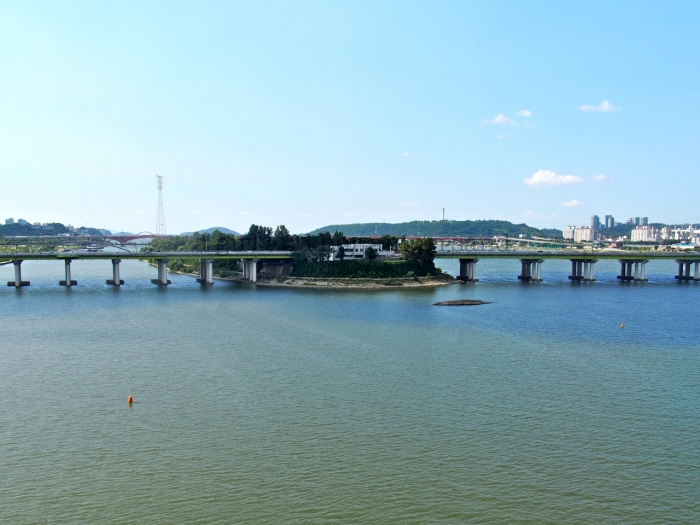








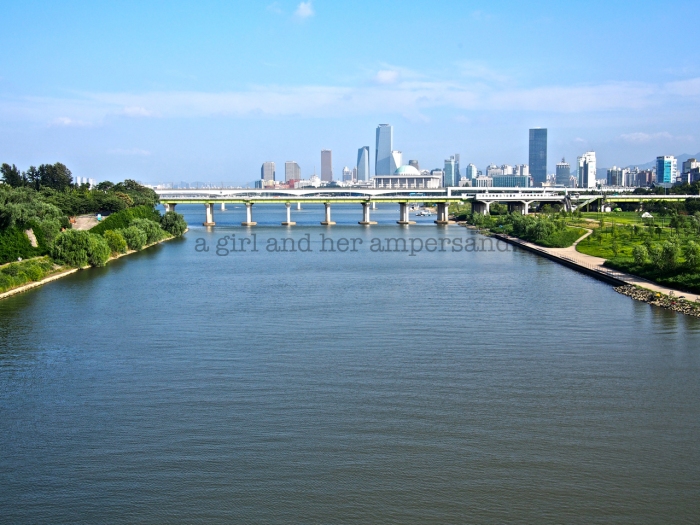



















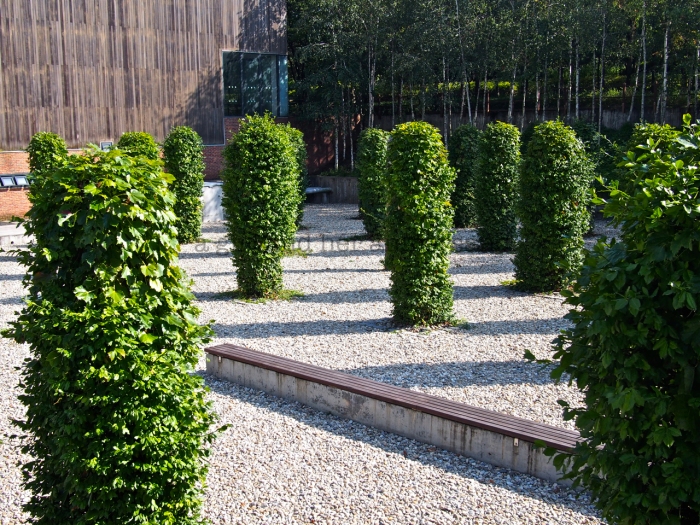





















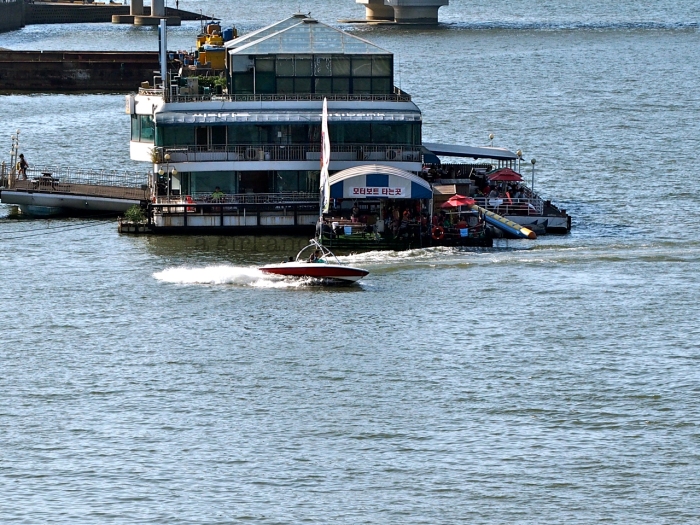

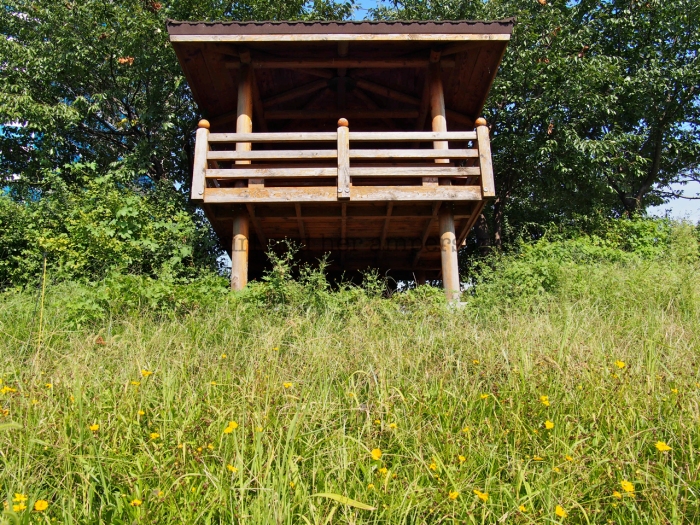









One of my favorite places in Seoul! I love standing on the bridge and just taking in the view of the city. Great post!
Thanks for the comment, and thanks for reading! Glad you enjoyed the post!
Pingback: Dangsan Station (당산역) Line 2 – Station #237, Line 9 – Station #913 | Seoul Sub→urban